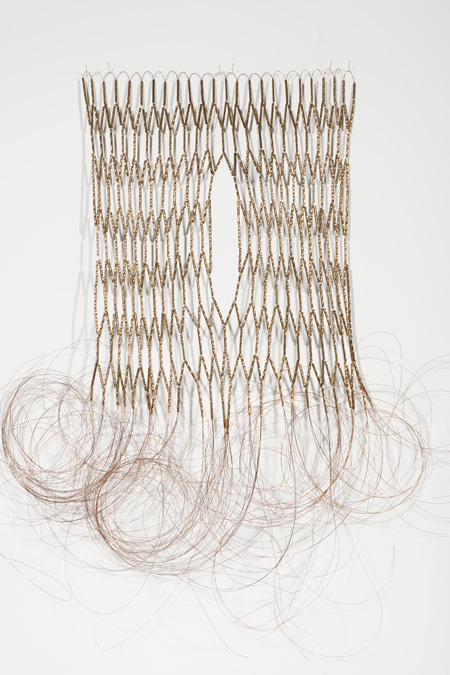Unartisanal ||
Back to exhibition
Defne Tutus
What draws you to the materials you work with?
I've always been drawn to string and how things connect. As a kid, I remember reading in old books about a chain of daisies made to wear in one's hair and this fascinated me. I'd space out while playing the outfield and study the weeds in the grass and try to figure out this problem of how to bind two little buttercups or dandelions together.
Why "craft" and not "art"?
I am an artist, not a true craft person, but without cumulative crafts traditions, I'd find myself in a dry, desolate place without a signpost. Luckily there is a bounty of textile techniques and traditions to pore over and admire. I'm obsessed with historic and contemporary nets, weavings, embroidery, lace, baskets, couture, millinery arts, face masks, veils, bodily adornment and even hairstyles. I would not have quite as fertile a ground to work on if I didn't respect and have interest in craft. It's the mother of everything in art history.
In what ways are you expanding upon the realm of craft?
Craft takes a single-minded focus and precise determination that I lack. I find myself changing my mind hundreds of times while making something. This kind of meandering between two points suits me well. I'm not always certain of what the final product will be, and I'm proud of its improbability.
Is your work rooted in any specific traditions or techniques?
I don't have a close personal connection with a fiber arts tradition. I use my outsider eye to scope out what I like and I try to copy it, imperfectly. I add my own inflection. But I always feel aware of the true fiber crafts traditions and strongly desirous of a connection to that lineage, even wanting a personal, familial or ethnic connection, but feeling alienated from that comfort and sense of belonging.
How do you navigate "craft" while avoiding popular trends?
I change my goal many times before I'm done making something and this gives me the freedom to push further and make stranger things.
Do you consider craft utilitarian, or decorative, or both/neither? Why?
Probably both and more. Craft is the perfection of a focused goal. The end results are as diverse as we are and full of stories, drama, culture.
Why do you think so many people are returning to fiber arts these days?
During the pandemic, I think cooking and making sourdough were the bigger attractions for most people, especially because food is a creation we can instantly enjoy with our family and even gift to our neighbors. Slow simmering crafts like quilting, knitting and sewing are comforting pastimes that hold pleasant memories for many people. Maybe we all long to be connected to old traditions and the time at home seeking relief from worry and anxiety led many people to make things with their hands. I wasn't in the right mental frame to finish anything epic, but I experimented with what I had to calm myself and dream about something beautiful.
How has the pandemic affected your practice?
I couldn't hoard more materials from junk shops or flea markets and had to make do with what I had at home. A lot of determined combing through the recycling bin.
Do you have any questions that you would like to pose to us or the other artists?
I'm interested in how artists contextually frame their work. What I want to know is, how have your interests and passions and research found their expression through your work?
Unartisanal is funded in part by the New York State Council on the Arts and the
New York City Department of Cultural Affairs
Unartisanal ||
Back to exhibition

